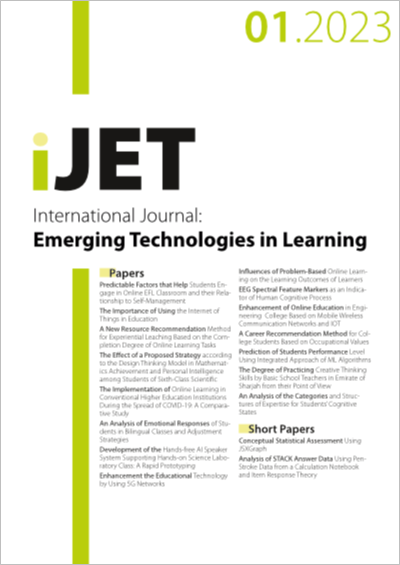A Career Recommendation Method for College Students Based on Occupational Values
DOI:
https://doi.org/10.3991/ijet.v18i01.37127Keywords:
occupational values, employment, college students, clustering analysis, collaborative filtering algorithmAbstract
The numerous recruitment information and the information asymmetry between college majors and work posts make it difficult for college students to seize the job opportunities that conform to their occupational values, and the employment success rate is always at a low level. The effect of current college student career recommendation systems is usually unsatisfactory, and the existing systems haven’t fully considered the role of college students’ occupational values in instructing their employment. To fill in this research blank, this paper studied a career recommendation method for college students based on occupational values. At first, the paper proposed a collaborative filtering algorithm based on the features of collect students’ occupational values, introduced a few features that can affect their occupational values, assigned weight values to these features, and gave the method for determining the weight. Then, based on the principle of the Kruskal’s algorithm (the minimum spanning forest), this paper modified the K-Means algorithm and clustered the features of occupational values. At last, the paper elaborated in detail the principle of generating career recommendation results for college students based on occupational values, and used experimental results to verify the correctness of the proposed career recommendation algorithm.
Downloads
Published
How to Cite
Issue
Section
License
Copyright (c) 2022 Nan Zhang (Submitter); Lei Wang, Yuanyuan Fu, Yingchao Zhang

This work is licensed under a Creative Commons Attribution 4.0 International License.



